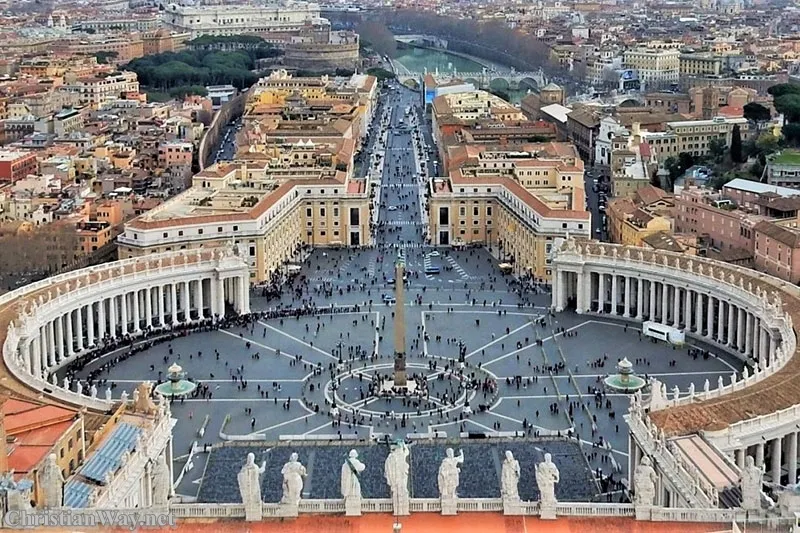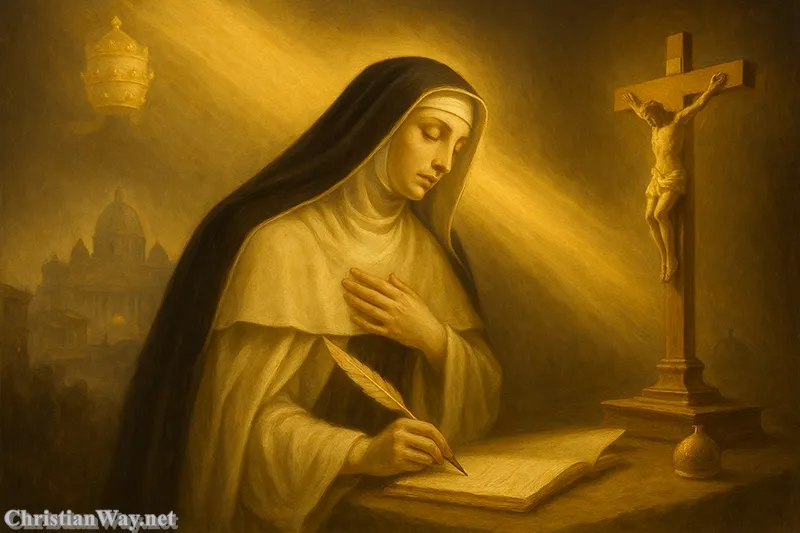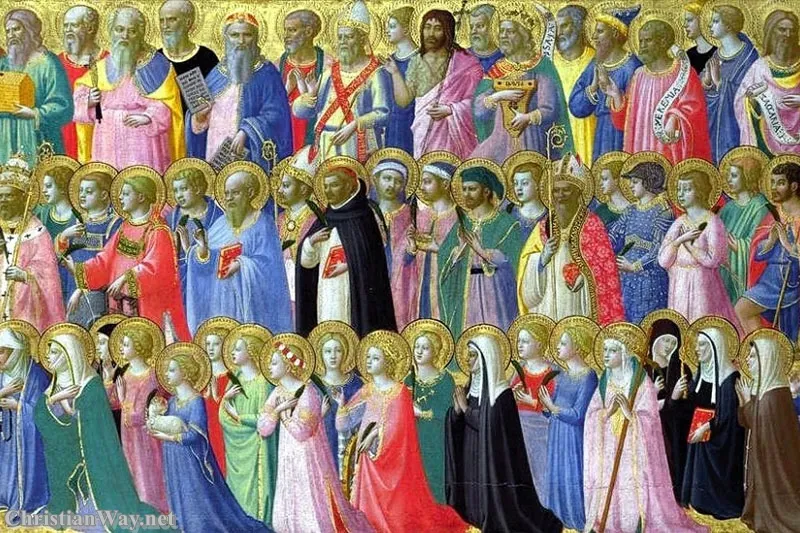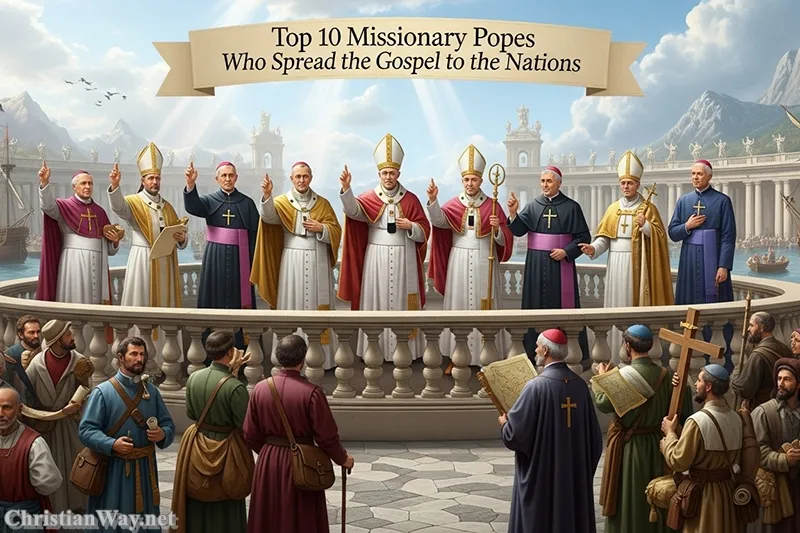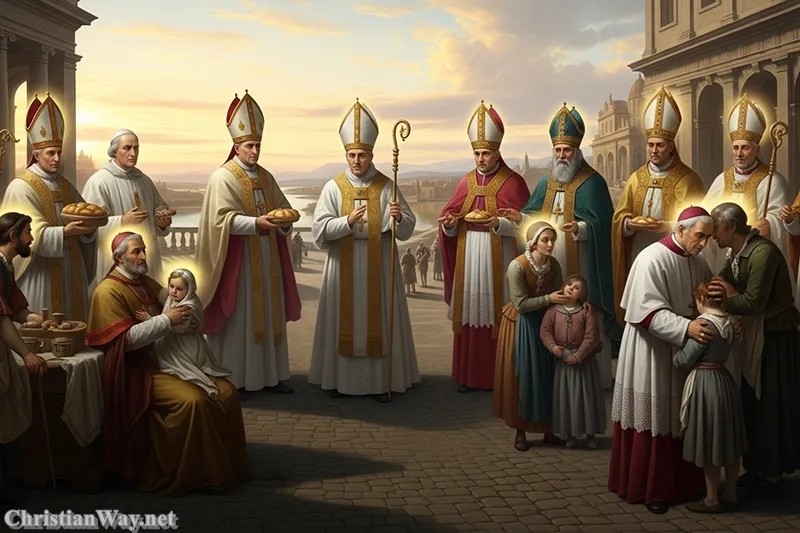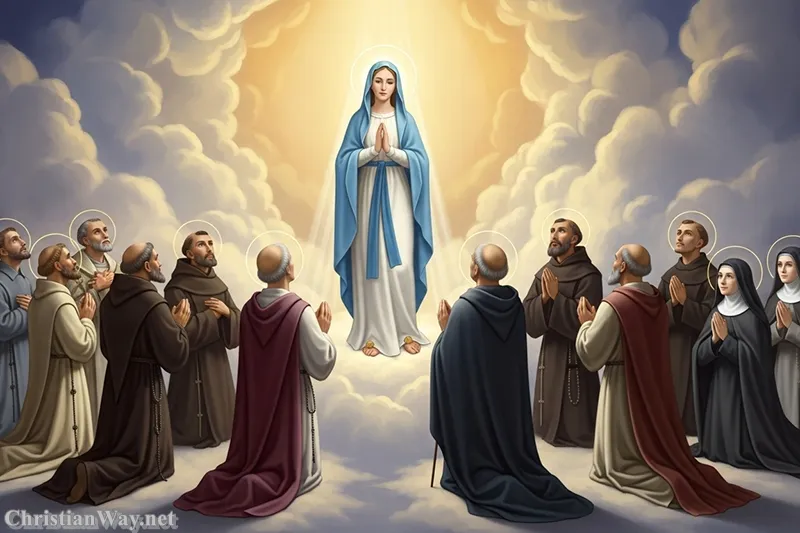Dear friends in Christ,
Every age of the Church faces moments when the Spirit calls for renewal — when faith must be rekindled, justice restored, and hearts turned again toward the Gospel. In such times, God raises up shepherds not to destroy what is old, but to purify, heal, and renew His Bride, the Church. Among these shepherds stand the reforming popes — men of prayer and conviction whose courage transformed not only the Vatican but the spiritual life of millions.
The history of the papacy is not a tale of perfection but of grace working through human weakness. Each reforming Pope, from Gregory the Great to Francis, responded to crisis not with despair but with faith — faith that the Church, though wounded, remains the Body of Christ, ever capable of renewal through His Spirit.
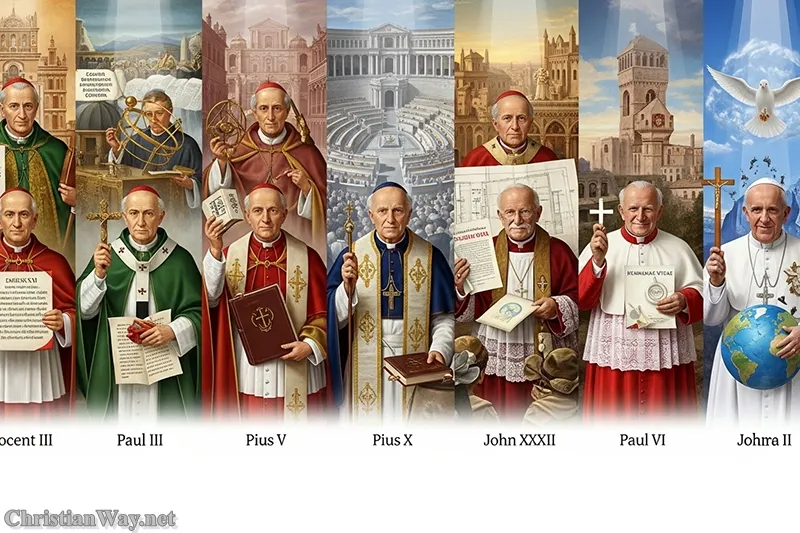
Let us walk through the centuries and meet these papal reformers, whose leadership changed the course of history and helped the Church rediscover her true mission: to be holy, humble, and alive in Christ.
1. Pope Gregory I (Saint Gregory the Great, 590–604)
The Shepherd Who Rebuilt a Broken Church
When Pope Gregory the Great ascended to the Chair of Peter, the Western world lay in ruins after the fall of Rome. Yet Gregory saw beyond decay — he saw opportunity for rebirth.
He reformed the clergy, insisted on moral integrity, and restructured the administration of the Church to serve the poor. Gregory reorganized the Church’s finances, turning them into instruments of charity. He also sent missionaries — including Saint Augustine of Canterbury — to evangelize England, expanding the Church’s reach across Europe.
A true pastor and reformer, Gregory also shaped Catholic worship by systematizing the Gregorian chant and codifying the liturgy, making worship more unified and reverent. His humility and vision gave birth to a papacy that was both spiritual and servant-hearted — a pattern for reformers to come.
2. Pope Leo IX (1049–1054)
The First Great Papal Reformer of the Middle Ages
Pope Leo IX confronted deep corruption in the Church — simony (the buying of church offices) and clerical immorality. With courage and clarity, he initiated sweeping reforms, holding synods across Europe to restore discipline among bishops and priests.
Leo IX was also a pioneer of papal travel, personally visiting local churches to enforce reform. Though his pontificate was marked by the painful East-West Schism of 1054, his zeal for purity laid the foundation for later reforms under Pope Gregory VII.
He reminded the Church that reform is not about control but about holiness — that Christ’s shepherds must first reform themselves before they can reform the world.
3. Pope Gregory VII (1073–1085)
The Defender of the Church’s Spiritual Freedom
Known as one of the greatest papal reformers in history, Gregory VII (born Hildebrand of Sovana) transformed the relationship between Church and State. His Gregorian Reform movement sought to free the Church from political interference and moral decay.
Gregory outlawed lay investiture, the practice of secular rulers appointing bishops — insisting that spiritual authority must come from God, not kings. This stand led to the dramatic Investiture Controversy with Emperor Henry IV, culminating in the famous moment at Canossa, when the emperor stood barefoot in the snow seeking the Pope’s forgiveness.
Though his measures were controversial, Gregory VII restored integrity to the papacy and renewed its spiritual mission. His motto — “I have loved justice and hated iniquity; therefore, I die in exile” — captures the cost and courage of true reform.
4. Pope Innocent III (1198–1216)
Reform Through Vision and Authority
Pope Innocent III reigned at a time when the Church wielded immense political power. Yet he used that authority to pursue spiritual renewal, not personal glory.
He reformed the papal administration, supported new religious orders like the Franciscans and Dominicans, and emphasized pastoral care and orthodoxy. Under his leadership, the Fourth Lateran Council (1215) introduced sweeping reforms — from clerical discipline to the doctrine of the Eucharist.
Innocent saw reform as both institutional and personal: the Church must return to the holiness of Christ her Head. His boldness shaped medieval Christendom and inspired future reformers to unite zeal with mercy.
5. Pope Pius V (1566–1572)
The Counter-Reformation Saint
In the wake of the Protestant Reformation, the Church needed clarity, purity, and courage. Pope Saint Pius V was the man chosen by Providence for that moment.
He implemented the decrees of the Council of Trent, enforcing discipline among clergy, reforming seminaries, and standardizing the Roman Missal and Breviary — steps that ensured unity in worship for centuries.
Pius V also promoted missionary work and upheld moral reform across Europe. His personal austerity and holiness made him a living example of the renewal he preached.
His pontificate reminds us that true church reform begins not in politics, but in sanctity.
6. Pope Gregory XIII (1572–1585)
The Reformer of Time and Education
While best known for introducing the Gregorian Calendar still used worldwide today, Gregory XIII was also a vigorous reformer of the clergy and education.
He strengthened seminaries to form holy priests, founded the Gregorian University, and supported missionary work across Asia and the Americas. His vision combined intellectual and pastoral renewal — showing that reform must engage both mind and spirit.
Under Gregory XIII, papal reform took on a global dimension, guiding a Church that was now truly universal.
7. Pope Pius X (1903–1914)
“To Restore All Things in Christ”
Few mottos capture the heart of reform as perfectly as Pius X’s: “Instaurare omnia in Christo” — “To restore all things in Christ.”
He reformed the liturgical life of the Church by promoting frequent Communion, lowering the age for First Communion, and encouraging daily reception of the Eucharist. He also modernized canon law, reorganized seminaries, and opposed modernist distortions of faith.
His love for the Eucharist made renewal not an abstract idea but a living encounter with Christ Himself. For this, he was canonized a saint — one of the few popes to be declared holy in modern times.
8. Pope John XXIII (1958–1963)
The Pope Who Opened the Windows of the Church
Affectionately called “Good Pope John,” Saint John XXIII was a reformer not by force but by gentleness. When he convoked the Second Vatican Council (1962–1965), he sought not to change the faith but to renew its expression for the modern world.
He called the Church to aggiornamento — “updating” — inviting her to open her windows so that the fresh air of the Spirit might renew her mission. Through the Council, he inspired liturgical renewal, deeper engagement with Scripture, and dialogue with the modern world.
His joy and pastoral heart revealed that reform can be tender as well as bold — rooted in hope, not fear.
9. Pope Paul VI (1963–1978)
The Pope Who Carried Reform Through the Storm
Pope Paul VI inherited the immense task of guiding the implementation of Vatican II. He faced divisions, misunderstanding, and rapid social change, yet remained steadfast in fidelity to Christ and the Council’s vision.
His encyclicals — especially Humanae Vitae — upheld the Church’s moral teachings with compassion and courage. He reformed the liturgy, promoted dialogue with other Christians and religions, and guided the Church through one of the most complex transitions in her history.
Saint Paul VI taught that true reform always walks hand in hand with continuity — the renewal of heart that never abandons the faith of the fathers.
10. Pope Francis (2013–present)
The Reform of Mercy and Mission
In our own time, Pope Francis has become a living witness to the mercy of God and a reformer of hearts. His focus has not been on structure alone but on the conversion of the Church’s soul — a Church that “goes forth,” reaching the peripheries of society and embracing the poor.
Through documents like Evangelii Gaudium and Laudato Si’, Francis has invited Catholics to rediscover the joy of the Gospel and the call to care for creation. His reforms within the Vatican — simplifying governance, addressing financial transparency, and promoting synodality — reflect a desire for a Church that listens and serves.
Above all, he reminds us that papal reformers are not revolutionaries, but servants of renewal — men who call the Church back to its first love, Christ Himself.
The Spirit of Reform in the Church
Throughout history, the reforming popes have not merely adjusted policies; they have rekindled holiness. They remind us that reform is never about novelty for its own sake — it is about fidelity, about returning to the heart of the Gospel.
From Gregory the Great’s rebuilding of the Church after Rome’s fall to Francis’s call for compassion in a weary world, the same Spirit has guided the barque of Peter through storm and calm alike.
Every reformer — whether stern or gentle, mystical or practical — teaches the same truth: that the Church’s strength lies not in wealth or politics, but in holiness, humility, and love.
Reflect and Pray
Reform begins within us. The Church is renewed whenever her children turn again to prayer, to truth, and to mercy. Each Christian is called to be, in their own life, a reformer — to let the Holy Spirit cleanse the heart and make it a dwelling place for Christ.
Let us pray for our Holy Father, and for all those who guide the Church today, that they may be instruments of unity and truth.
“Come, Holy Spirit, renew Your Church and kindle in us the fire of Your love.
Grant wisdom to our shepherds, courage to our leaders, and holiness to all Your people.
May the face of Christ shine anew in every heart, and may Your Church, renewed in love, bear witness to the glory of God forever.”
— Fr. John Matthew, for Christian Way
